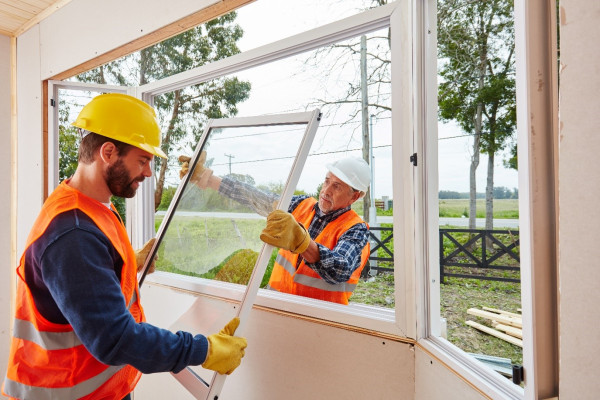SNZ TS 4211:2022 Specification for classification of windows gives access to 15 year’s-worth of advancements
The new technical specification supports the creation of homes and workplaces built to withstand the challenges of our environment while providing new provisions for mid-rise and specific design buildings.

Window fitters installing a new bay window.
Windows, our invisible walls
New Zealand windows have a lot to endure: harsh summer sunlight, ferocious southerly winds, bitingly-cold blizzards and changing conditions under a shifting climate. There needs to be consistent performance yet with adaptability when designed for use in the vast range of buildings across the country – from high-rise blocks in metropolitan areas and large open public spaces to quaint seaside villas and rural farmhouses.
A range of test methodologies
For use by window suppliers, manufacturers and designers, SNZ TS 4211:2022 provides a group of test methods to determine the likely performance of windows relative to their exposure, design and building situation. Factors have been considered that are often invisible to consumers when built to standard including air permeability, water penetration, strength, rigidity and operability. Reference has been made to other standards that influence the situation within which the windows must perform.
Technical specification supersedes
Addressing 15 year’s-worth of industry advancements, the revision has resulted in a technical specification as opposed to a New Zealand standard. A Technical Specification – or TS – still provides a robust consensus-based approach to development but greatly speeds up the process. SNZ TS 4211:2022 supersedes the former NZS 4211:2008 and can be considered a full revision that demonstrates compliance with minimum requirements under the Building Code.
Developed by experts
Contributions were made by representatives on P4211 from the building sector, the regulator, engineers, accreditors, surveyors and manufacturers. Project Manager Brian Bell praised the committee who worked diligently on the revision under tough circumstances with the project kicking off just after COVID lockdowns in 2020. ‘The committee worked very hard, and this is a revision well and truly. Changing the standard to a technical specification in no way reduces the effectiveness of the product yet allows for quick improvements to be made and the building regulator BSP have committed to a further review in the coming years.’
The committee have worked to address issues the previous edition did not, expanding the scope of this work to include mid-rise buildings (such as multi-storey apartments) particularly in relation to strength, rigidity and weathertightness, and the new airtightness provisions which are likely to be useful in the design of healthy and energy-efficient buildings.
Windows play a crucial role in energy efficiency, climate change resilience and healthy homes and workplaces, and touch each and every New Zealander’s lives. We all rely on windows to withstand the test of time and all that our environment can throw at them.
Sponsored for free access
The Building System Performance branch of MBIE has sponsored access to view and print a single downloadable PDF copy of this standard at no charge.
